Opening your own Massage space is no easy feat. It takes a lot of planning and preparation to get ready to open for the public. Past your launch date, you have to have a plan in place for how you’re going to operate, market, advertise, and grow your business. You need advertising goals and financial goals in place. Most importantly, you need to be prepared for the ups and downs that will inevitably occur with policies in place that allow you to effectively deal with these occurrences in a consistent yet professional way.
Several years ago, when I was making plans to open my own Massage practice, I didn’t have much guidance. I had to research every aspect of business operations and use that knowledge to develop a plan that would work for me and my goals. At the time, I also had 4 jobs and I spent most of my spare time researching and developing plans for how I would own and operate a business that I hoped would be successful.
For me personally, it took 3 years of planning before I was able to start making preparations including purchasing a space, making upgrades, renovations, meeting with advertisers, and purchasing products, supplies, and equipment. That’s a long time to wait before actually doing any preparations!
When I reflect on that time, I realize that if I had had someone to guide me and steer me in the right direction, I would have been able to move my plans along much faster than I did. Since then, I’ve had people ask how I was able to open up my business and what I did to make it happen. I find that most people who are interested in opening their own business really want to but don’t know where to start.
In fact, I think a lot of people don’t know where to start and I don’t blame them. It is a vast undertaking. If you’re one of those people, I believe I can help. After making my plan and putting it in place, I can see now that my plan was successful in opening and successfully operating and growing my massage practice into a full-time business.
Today, I’ve put together a comprehensive guide on how to open a massage practice in your home. This is a very long article, so grab a cup of coffee or your favorite drink and settle in. Make sure to pin this article so you can refer back to it later!
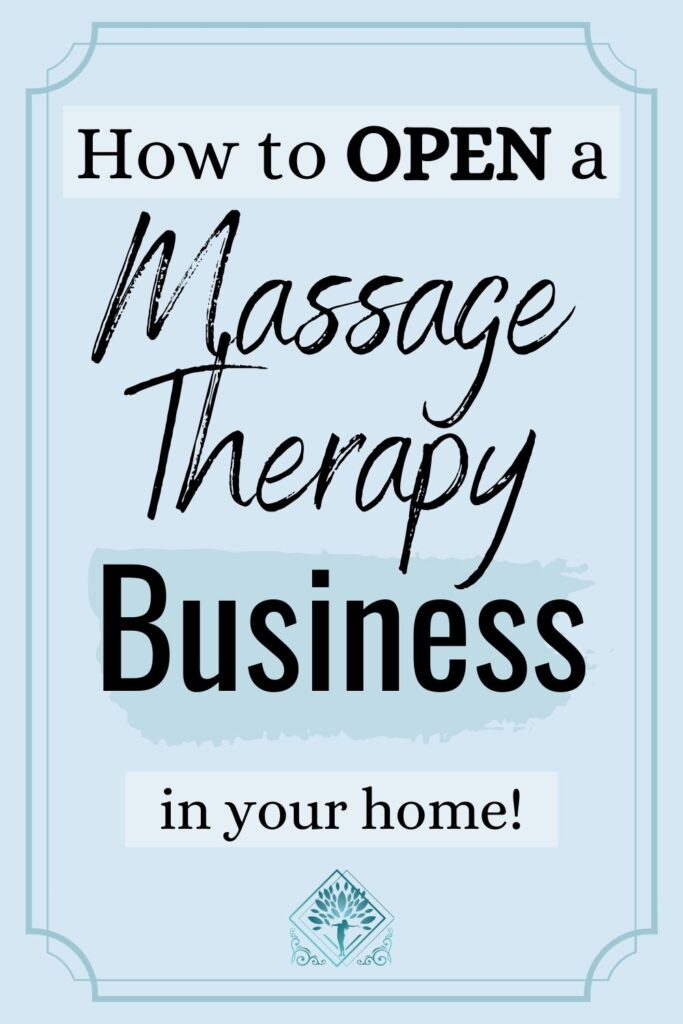
Obtain RMT License
The first step in opening any business is to be educated on what service you want to provide. This means attending an accredited or approved formal Massage program of your choice. If you are in Ontario like me, after you complete your program, you will have to take provincial exams and pass so that you can become Registered and have the ability to work with insurance companies. If you’re not in Ontario, you will have to complete the licensing requirements your province or state requires.
School
Before you can get your license to work as a Massage Therapist, you must first attend Massage Therapy School. Most programs are 2 years long and some are as short as 18 months. Make sure you prepare a list of questions in advance before attending your meeting at the school so you can obtain all the information at the same time.
Board Exams
When preparing for board or state licensing exams, make sure you devote time to studying! A lot of time! Study. Practice. Repeat. In Ontario, you have 3 chances to successfully pass your board exams. If you fail 3 times, you have to go back to school and retake the entire program to obtain an entirely new diploma! Imagine having to pay for everything again! Not including losing out on possible income because you can’t work due to having to retake your entire program. So take the time to study for the exams to make sure you pass the first time!
Gain Experience
After you’ve obtained a diploma and passed the required exams to be able to practice, it’s time to gain experience. This is the most important thing you can do if you want to open your own business. Without experience, you won’t know how to handle uncomfortable situations that may arise. For example, without experience, you would have no idea how to handle a client that tries to get you to commit fraud or deal with a client that tries to take advantage of you.
When you finally open up your business, it’s best to have a multitude of experiences from different types of workplaces so that you will feel comfortable handling all types of situations. Since you own your business, you will also be the manager which means that you will have to deal with any concerns that your clients may have. So take advantage of the experiences that will occur when working for someone else. They are extremely valuable for when your day finally comes.
Work for clinics or spas
Don’t forget to work for a variety of different places when acquiring all of this experience. This will help you evolve as a Massage Therapist. When you only work at one location for your entire career, you don’t get experience working with different types of clients. You miss out on interactions that come from working in different settings. For example, spa clients are more challenging than clients that come in for chronic pain relief or even acute pain relief. Working in a Spa setting is very different from working in a clinic. It is faster paced and higher pressure more consistently.
So make sure to work at a variety of different places like massage clinics, doctor’s offices, physio clinics, high-end day spas, resort spas, and any other type of workplace you can think of. Round yourself off as a Massage Therapist. I guarantee you, it will round you out as a future business owner as well!
Create a Business Plan
After you’ve gained some experience and are ready to take the leap to owning a business, your next step is to create a business plan. A business plan is a document that sets out a business’s future objectives and strategies for achieving them. It can either be formal or informal. If you need a bank loan to start your business, you will want to make a formal business plan.
I’m going to go over each part of a business plan and briefly what’s involved in each step. A business plan includes:
Market Research
Use a notebook and keep all of your research in one place. Market research is where you gather data on your competition and analyze it to help you make informed decisions for your business and help shape your business plan.
Plan Purpose
Determine whether the purpose of your business plan is to keep yourself on track or for a bank loan. This will determine how formal your plan should be.
Mission Statement
What is your promise to your clients? Why did you create your business? What is your overall goal? What makes you and your business different from every other related business in town?
Executive summary
This is the first thing that anybody will look at if you are using your business plan to apply for any kind of loan. Your executive summary should include:
A complete overview of your plan including your mission and/or vision statements, an outline of your business strategy, and a basic overview of your plans and goals for your business. Also, include a brief background of yourself and a basic overview of your financial status and needs.
Basic Timeline/Schedule Trajectory
Include key business milestones you want to reach and associated deadlines for each.
Competitor Analysis
You can make this step as complicated as you want but at the very minimum, analyze your competitors and what they are doing to get and keep customers.
Services/Products & Fees overview
Include the services, products, packages offered and associated fees in your plan.
Budget Breakdown (Start up Costs)
You will need to include this step to help keep you on track financially during your start up process so you don’t overspend
Projected Expenses
This will cover the projected monthly expenses to run your business.
Projected Income Calculations
You will always need to have your projected income calculations based on the realistic amount of services you can and will provide
Quarterly Income/Expense goals
You will need to include quarterly income/expense goals. These are projections that will help keep you on track and motivated. Also, the bank will also want to see these projections so don’t skip this step!
Day to Day Operations
Include a basic overview of your day to day operations
Policies & Procedures
Before opening your business, you will need to brainstorm different scenarios that may occur and decide on policies and procedures so that dealing with these interactions remain professional and consistent with every client
Marketing Plan
Include an overview of your marketing plan. How will you market your business to potential clients
Advertising Plan
Include an overview of your advertising plan
Personal Business Goals
This is something that you may want to include for yourself. Keeping track of your personal income goals (daily and weekly) and goals for the number of services vs. amount of clients you see etc.
SWOT Analysis
This is a strategic analysis of a business’s strengths, weaknesses, opportunities, and threats. Applying this step will help you formulate your business plan and plan for obstacles that may occur.
If you’re ready to create your plan but are overwhelmed and lost with where to start, checkout my 69pg Business Plan Pack!
As you can see from the list above, there are many aspects to formulating a business plan for yourself. Even if it’s a basic one that no one else will see but you, you will still have to think about all of the different aspects of owning and operating a business. Even if you don’t need a loan, I highly recommend going through each of these steps and putting together a basic plan so you know what you are doing.
Decide on Location & Set up Type
This is such a huge and important step because it will be where you have your workspace for at least a few years. Take the time to put serious thought into what type of location you would like. A good way to do this is to make a list of the different aspects you want and need in a space and choose one accordingly.
Some aspects you might consider:
Does the space have it’s own entrance? Does the space have it’s own bathroom or will clients be using your personal bathroom? How much will the space cost you monthly if it’s separate from your home? Do you have ample parking?
These are just a handful of things to consider when choosing a workspace. Each Massage Therapist has their own preferences, wants and needs when it comes to their workspace. So make a list for yourself and choose a location accordingly.
Building Accessibility
Something also to consider when opening your own space, especially out of your home, is building accessibility. Always ensure that the building is easily accessible, so ensure your business space is accessible from the front or side only. If you want to work from home, make sure your business and personal spaces are separate. You don’t want the public walking through your house.
Decide on a Business Name
Now for something a little more challenging. Or at least it was for me. You need to decide on a business name. When doing this, keep in mind that you want your name to be professional, yet show potential clients what you are about. Pick something that is shorter and easy to remember.
Choosing a name is important because this will be representing your business. More importantly, you need a business name in order to be able to register your business as a legal business.
Ensure Legalities are in Order
Before you can open your business and turn it into a successful money making machine, it’s best to make sure you have the legalities in order. Completing the next few tasks will ensure that your business is legal with your province or state and is complying with all laws.
Get an Accountant
One of the best things I’ve done is get an accountant. My accountant preps all of my business and personal tax returns and lets me know when I have to make upgrades to my business like when to start charging HST or when to upgrade from sole proprietor. He has all the answers to all of my business tax related questions.
You can sign off for your accountant to talk to the CRA (if you’re in Ontario). So when they have questions regarding your account, they talk to your accountant, not you. Just one less thing to have to deal with. So do yourself a favour and get an accountant! You won’t regret it!
Register Business Name
Remember how you recently chose a business name? Well now it’s time to register that name. This is the first step in making your business a legal business. Registering your business name is not difficult and is not a long process. However, you need to do this step because it makes your business legal and gives your business an identity that no one else can take.
It helps with continuity for your business to new and existing clients and helps protect your business assets. Once you register your business name, you will receive a MBL or Master Business License.
Open Business Bank Account
Once you have your MBL, you can now go to the bank and open up a business bank account. You cannot do this unless you prove that you are a registered business. Having a business bank account will allow you to keep all of your income and expenses separated from your personal accounts and is a much easier way to provide your income to the government at the end of the year.
Having a business account also allows you to build a relationship with your bank to eventually get a business credit card and allows your business to accept credit cards. This is important because the credit card companies require a business account to apply.
Obtain HST Number
Your MBL will also allow you to sign up for an HST number as they require your BN number (which is on your MBL). This BN number is a unique number that the CRA (in Canada) assigns your business as a tax ID. It is a number that is unique to your business. You use this number when dealing with federal, provincial and local governments.
Having an HST number allows your business certain tax breaks as well. To get the specifics for your particular business, make sure to talk with your accountant.
Obtain Necessary Permits
This is another important legality to take care of BEFORE you choose a location or open a business. Make sure you get a permit to operate a business out of your home. Bylaws are different in every town and city. Each one has its own unique set.
Some might require you to apply for a permit and make a presentation at the next town meeting regarding your business. Not completing this step can result in your business being shut down by the town if you are caught working from home without proper permits. Once you have your permit, put it in the same folder that contains your MBL and HST information.
Zoning Requirements
Depending on your house, you may not be legally zoned to provide services from your house. If this is the case for you, you may be able to apply to your city hall to have the zoning of your house changed so that it is legal for you to work from home. Not doing this can result in your business being shut down by the town if you are caught working without the proper zoning. To apply to change your zoning, contact your local town hall and request the appropriate paperwork.
Obtain Massage Therapy Insurance
Now that you have the most important legalities out of the way, it’s time to ensure that your insurance is up to date. If you have already been a Massage Therapist for a while, you will already have insurance. However, if you are a new Massage Therapist, make sure to apply for Massage Therapy insurance.
Obtain Commercial/Business Insurance
When getting insurance for your business, you want to make sure that you will be covered if someone falls while on your property or slips in your bathroom. Not just if an injury occurs from a massage technique. So make sure to inquire about this when contacting insurance companies. Also, ensure that all of your products and equipment are covered.
Start Up Costs – Budget Breakdown
A complete budget breakdown is so important to help keep you on track financially while starting and running a business. Start up expenses can add up fast if you don’t have a budget and it’s very easy to go overboard when you are excited and ‘buying’ at the same time for your new business.
Expenses
Your basic start up expenses include: Products, office supplies, equipment, furniture, decor, house repairs/maintenance, landscaping, functionality of space and advertising. Let’s go through them one at a time.
Massage Therapy Products include all professional and retail products. Some examples include: essential oils, lotion/gels, linens, towels etc.
Office Supplies including paper, printer, computer, ink, pens, clipboards etc.
Equipment including a Massage table, thermophore, trolly, hot stone kit etc.
Furniture including chairs, computer/office desk, cabinets etc.
Decor including wall photos, candles, salt lamps etc.
Repairs
Repairs and maintenance is another very important item to take care of BEFORE you open your business. Whether you are working from home or in a building, making sure everything is in good working order will drastically help your business function. So make sure you get these things looked at by a professional.
Electrical box and outlets, air conditioning, heating, bathroom upgrades (sink/toilet) and laundry facilities.
When you are done having a professional take a look at your set up, don’t forget to paint your work area! This will give you a fresh look and get rid of any marks or fingerprints on the walls.
House Maintenance
Now that you’ve made a plan for any repairs that you may encounter, you need to plan for the wear and tear that occurs. Over time, certain things will need to be maintained or replaced. This is normally house maintenance for most people. However, when you have a business, you have to keep on top of this so that you get to things BEFORE they get bad enough to cause a major issue.
Get into a regular routine of checking certain items in your house/business to make sure things are still in good working order. Some issues to watch out for are faucets breaking, sinks clogging, heating shutting off, paint chips, broken laundry machines, chipped floorboard, toilets etc.
Landscaping
The outside of your house is an area you should also pay attention to. It’s not absolutely necessary, but if you want to create a business that feels welcoming and safe to the general public, don’t skip this step!
A few things to focus on are flower beds, hanging flowers, your entrance, your lawn etc. Keep in mind that if you were like me, and bought your house, you will not necessarily know what needs to be upgraded, repaired, or maintained, until you decide on a house.
Marketing & Advertising
Now it’s time to make a budget for advertising. This is probably one of the MOST IMPORTANT things to budget for! Without marketing and advertising, people will not know that your business exists! You need to commit to a consistent advertising strategy for at least 18 months, or until your business gets going. Sometimes this can get a bit confusing so let’s first look at the difference between marketing and advertising.
Marketing means the action or business of promoting or selling products or services including market research and advertising.
Advertising means the activity or profession of producing advertisements for commercial products or services.
Make sure you design a marketing strategy as well. In order to market your services properly, you should be doing at least minimal market research. Also, make sure to ‘know’ your products and services, and what type of people you are hoping to attract. From this information, you can decide how to effectively advertise to acquire these clientele.
Marketing Materials
Once you have your marketing strategy, you will need marketing material for new and existing clients. Some items you should have are:
- Business Cards
- Pamphlets
- Rack Cards
- Loyalty System Cards
- Brochures
- Magnets for clients to take home
Advertising
You can either advertise for free, or do paid advertising. In the beginning, the different types of paid advertising you should consider including in your budget at the very least include: business signage for your building or house and online advertising. If you are able to afford a bit more from the beginning, I would highly recommend advertising on the mobile town signs in your city. They are the black signs you see around town advertising for different stores.
There are many free and paid methods available to advertise your Massage Therapy business. You can decide on one method, or use a mix of both. Now that you’ve carefully and thoughtfully gone through each startup budget step, you should have a better picture of what your financial needs will look like.
Basic Ad Plan
Once you have decided what types of marketing and advertising you are able to include in your budget, you can formulate your basic marketing and advertising plan. Create a plan that covers the first 6 months of your business being open. After month 3, you can evaluate your progress and decide what you should continue with and what you should cut from your plan. Make sure to track where each client comes from so you can go back and count everything up. This will give you an idea of what’s working, what could work but needs to be improved and what just isn’t bringing in new clients.
At the absolute bare minimum, you should have business cards, a door/window sign for your business, a facebook page and most importantly, a website! Having a website is essential because EVERYONE looks up new businesses! To most people, if you don’t have a website, you don’t exist as a business.
Massage Room Layout
This is something you can consider in the planning stage but can’t truly figure out until you have your space. Regardless, it’s still important to give this a bit of thought. I have worked in beautiful big rooms and I have also worked in very cramped and tight spaces. When it came time to decide on my layout, I knew right away I wanted to have enough space to freely move around without bumping into things.
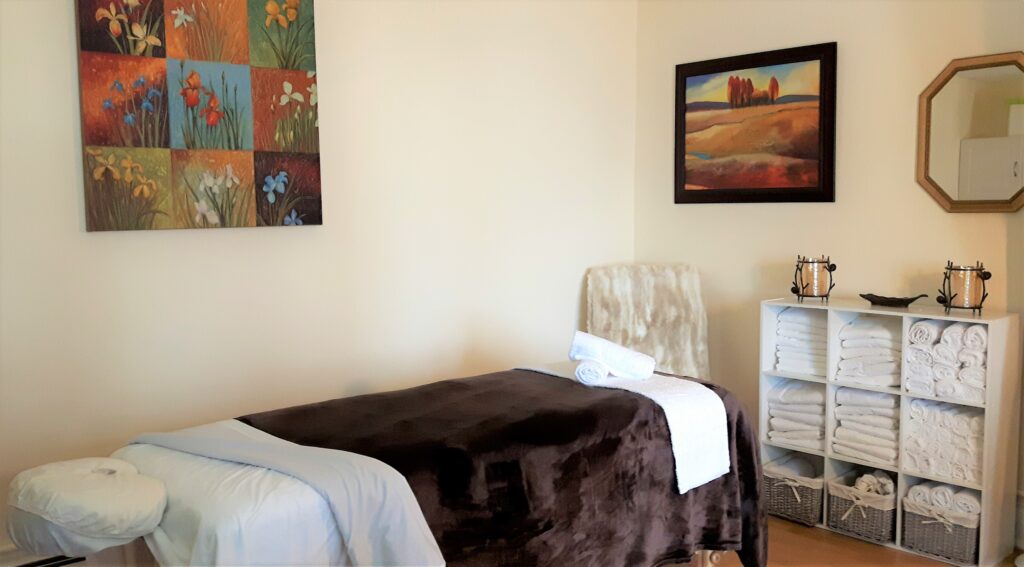
So consider what kind of spaces you’ve worked in in the past, and choose a workspace accordingly. If you are opening your business in your existing house and your room is smaller, consider having your table in a diagonal position. If you were like me and you are buying a house to also open a business out of, consider these things for your business layout as well:
- Space for client fill out forms
- Place for clients to sit if needed when undressing or dressing
- Massage table in a private area (depending on layout; behind curtain or door)
- Reception desk (even if small)
- Counter top or trolly area to hold equipment
- A nice flow to the space
Paperwork
You can’t open your business without having all the appropriate paperwork in order for your clients. This is something that you have to prepare in advance. The basic forms you will need are:
- Health History Form
- Consent Form
- Pre-Natal Health History Form
- Pre-Natal Consent form
- Sensitive Areas Consent Form
- Client treatment form
- Client assessment form (for RMT)
- Massage Therapy Receipts
- Daily Invoice
If you are planning on working with Telus Health and Medavie Blue Cross, you will also need to sign up with them. Once you signup, you will be able to access the paperwork that you will need to run this part of your business.
Make sure to keep all of your business paperwork in the same place so you don’t lose anything! This includes any permits you have, your MBL, zoning paperwork, business plan, debit terminal contract and all other items like this. Make a file folder labelled Business Paperwork and keep it in a safe place for access when needed. Later on in this article, I will also be going over the business goal tracker and ongoing expense plan which should also be kept in this file or one similar.
When starting a business, you already have so much to do, and creating forms for your business is a task that takes hours!
GET STARTED WITH YOUR PAPERWORK FOR FREE!
Instead, signup to gain access to the Massage Therapy Business Resource Library and download all the basic startup forms that you will need to start your business with ease for free!
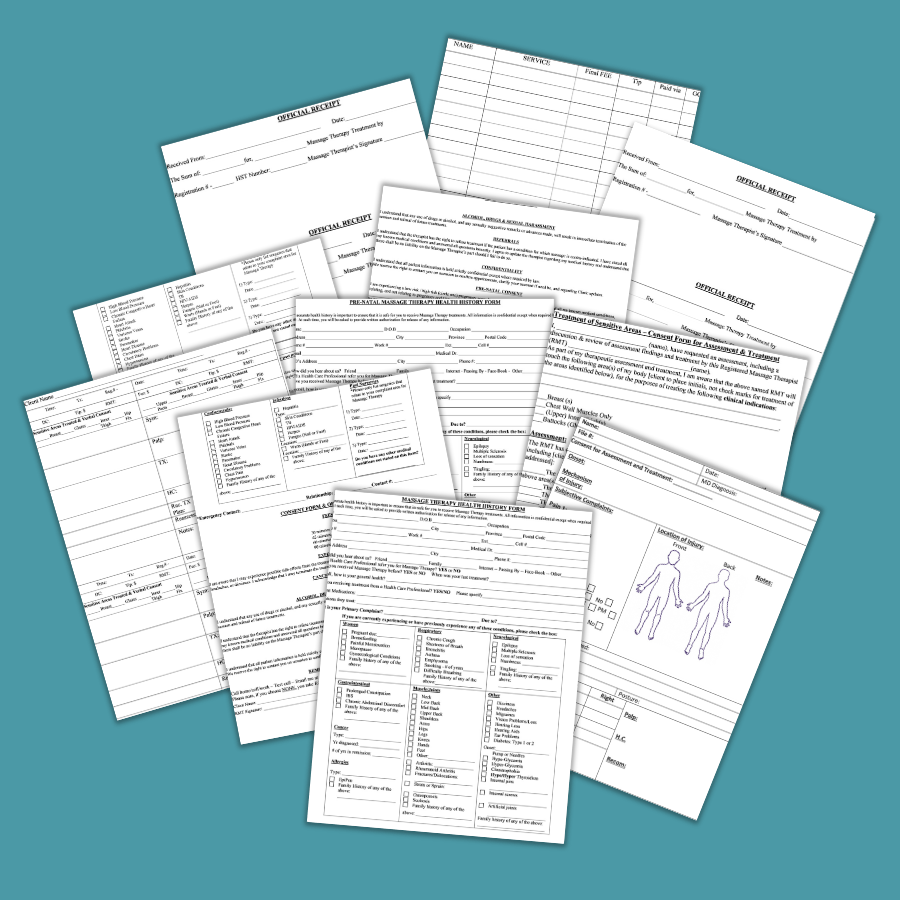
Scheduling & Payment System
Scheduling
When making a decision on this part of your plan, consider what you can or want to afford, what kind of business you are going to run and realistically what you need to get started. In the beginning, it is the easiest to have a paper calendar. If you are just starting out, paper calendars are great because they are portable. If you aren’t planning on getting an online booking system for a while, you will want to have your appointment book accessible for when clients book.
As your business grows in size and you become busier, you can consider purchasing a booking system. You can do this for a few reasons. The first is to allow your clients to book online. You can purchase one to simply have it responsible for ‘keeping track’. A booking system on the computer will automatically tally up your income and HST as well as provide you with a number of reports to help your business function.
When I was ‘paper only’, I had to tally everything up by hand. I still use a paper planner for booking my clients, but now I also have a booking program that keeps track of everything for me! Some people decide to make the complete transition to paperless, but that is a personal preference. It is whatever works for you! For me, half paper, half on the computer works best.
Payment System
Really give a lot of thought to how you want to accept payments. One of your options is cash only, which unfortunately leaves room for clients to ‘forget’ their cash. You can accept cheques, but that also leaves room for problems. In this area, I firmly believe having a debit terminal is the way to go. It will allow you to accept credit and debit cards and is already a world wide accepted way to accept payments. People feel more comfortable when they see a debit machine because it is familiar.
I use and love Elavon. If you prefer to minimize the amount spent on fees, you can also try square. The setup process is not as complicated as you think. It requires a small amount of paperwork and a quick phone call to get setup. For square, it’s as simple as signing up for their website and purchasing the equipment you want. They will send it to you and you can start accepting payments right after that.
Contact Options
This is such an important component but often overlooked. Decide on how you want your clients to contact you. Do you want them calling or texting your personal cell phone? Or do you want them calling a landline? If you have a landline, should it be a business line or a residential line? These are things you need to consider before offering your phone number to people. If you don’t want people contacting you in the middle of the night because you keep your phone on loud, don’t give people your cell number!
In my case, I started off with a residential landline and voicemail service that I eventually cancelled because my clients slowly started showing an interest in text messaging for appointments. Now, almost all of my clients text my personal cell phone. This works for me because I get to save the $60/month that I was spending (as very few people were using the landline). My phone is always on silent at night, so my clients can text me whenever they want and it doesn’t bother me.
I was able to cancel my landline but transfer the phone number to my cell phone so I could continue to keep the business phone number that my clients were used to. To do this, call your cell phone service provider and ask if it’s possible for you! The other options are to have an online booking system where clients can book their own appointments. A website they can email through, a Facebook page where they can message you. So there are many options, but consider your preferences and needs carefully before you commit! Clients prefer consistency.
Screening System
A screening system is where you actively screen clients to ensure that there are no red flags when it comes to accepting clients into your home. Not every person is a nice person. You need to be proactive to keep yourself safe. Screening is something you can choose to do or not to do. It is up to you. However, keep in mind that if you are working from home, it can be a very smart and sensible system to implement. You are inviting strangers into your home, and not everyone should be in your house.
It is always important to remember that you are running a business and to keep your business separate in your mind from the personal side of your house. However, this is still your house, you live there, and there are still creeps out there! Certain people, if they present red flags, shouldn’t be booked into your schedule. It is still your job to keep your space safe.
Whether it’s business or personal. Your best option is to have a simple screening test you can do over the phone. Make sure to ask certain questions during the conversation where they are already inquiring and looking to book.
Here are a few questions you can ask.
- Why are you seeking Massage Therapy treatments?
- What area did you injure?
- For groin related – what sport were you playing? Exactly how did the injury occur and when?
- When was your last Massage?
- Where do you normally receive your treatments?
- How did you find my business?
These simple questions and many more can give you an idea if the client is being truthful. The open ended questions allow the client a chance to tell you how their injury occurred and it gives us as Massage Therapists know if the action they describe could in fact cause that injury.
It’s kind of like when the dentist calls you out for not flossing but you never told them outright that you weren’t flossing. They know you aren’t because your gums start bleeding during the cleaning process! It’s a similar thing. You as the professional know how different injuries are caused. Specific questions help determine if they are being truthful.
JOIN OUR SMALL HOME BUSINESS PRIVATE FACEBOOK COMMUNITY!
This community is a positive and safe space dedicated to supporting you on your journey towards your goal of opening a small home business! It’s full of like-minded individuals who are all working towards their goal of opening a small home business. Get inspired, gain new friends and the support you need to succeed! Click the image to join instantly! If you would like to join our Facebook community just for Massage Therapists who want to open a small business, click here to join!
Service & Product Price List
Consider your fees carefully!! If you rush this step, I guarantee you that you will regret it. There is a very fine line between undercharging and competitive prices. Here is something to think about: I’ve had several colleagues start a business, whether it was Massage Therapy or Aesthetics, and undercharge for their services because they weren’t confident.
This is a bad move! Once you set your prices and clients start coming in, they expect the prices to be the same or similar. Then, you are only able to increase your prices so much each year or even every few years. If you raise your prices too fast or too much, you will absolutely lose clients. So you must choose the right prices from the start.
People tend to undercharge because they think it should be cheaper if they work from home. The fact is that Massage Therapists who work from home still have products and retail products to purchase, laundry to wash (heat, hydro and water), electricity being used in their workspace, clients using their bathroom (water) and more. Other items include marketing materials, advertising, a website, creating the required paperwork, time spent cleaning their space, cleaning and folding dry linens, paperwork in between sessions and more!
Being completely self employed and working from home, we still have to pay for the increase in our monthly bills. At a former clinic, we had to pay a rent or commission because everything was done for us, but now, we are paying for everything! So never let anyone manipulate you into charging less because even though we work from home, we still have A LOT to pay for!
An easy way to do this is to look at other websites of similar businesses in your area and start recording what they are charging. You will very quickly get a sense of what competitive prices are in your area. What you need to do is record the prices from several businesses for the different services you will be offering and then find the averages for each service.
Also take note of what Massage Therapists who work from their home in your area are charging. If they are all charging $90+hst, you shouldn’t be charging $75+ unless it’s a first massage special for new clients.
However, if the average is $75+, but you are experienced, there is no reason why you couldn’t charge $80+. It is completely your choice, but whatever you do, do NOT undercharge for your services!!
Your Schedule
Here is a fun thing to work on. Choosing your work schedule! Again, be careful what you choose because clients too often don’t like change. Try to choose a work schedule that you can stick to for at least 6 months. Always consider your needs as a person first. Take everything into consideration including if you have kids, a spouse, pets, if you’re a gymaholic, if you love mornings, evenings or weekends and how long you can realistically stick to the schedule you set out for yourself.
For example, for the past year and a half, I was available from 9:00am – 7:00pm, Monday to Friday. I did this because I figured my business was still growing and I wanted a bit more income, so I could either get a part time Massage job or work more evenings (which is the easiest time slot to fill).
What ended up happening was a lot of breaks between appointments (sometimes long breaks) and me working until 9:00pm on occasion. This was not good for me because I go to bed at 9:30pm and would be eating dinner right before that time. This schedule also meant that I wasn’t able to have dinner with my spouse most nights.
Figuring Out Your Schedule
Step 1 – Consider all aspects of your life
Step 2 – Consider what you can and can’t maintain
Step 3 – Come up with and write down on a blank piece of paper, 7-10 different ‘potential’ schedules that you could do for a minimum of 6 months.
Step 4 – Eliminate the potential schedules (that won’t work for you for whatever reason) one by one until you are left with 3
Step 5 – Choose the schedule that suits your needs best.
Keep in mind, if you are a new business, it might be best to go with a schedule that offers more evenings to gain new clients faster. Then, you can slowly work towards your ideal hours over time, adjusting your schedule to accommodate yourself every 6 months.
If you are starting your business on top of a job or two, like I did, maybe only start with a day or two per week but have longer hours. When I first opened my business, I was available Tuesdays and Thursdays from 10:00am – 7:00pm for 3 months before I opened up on Mondays and Wednesdays where I worked from 9:30am – 4:30pm for almost a year. At that point, I opened up a half day on Fridays and held this schedule for another 12 months before going Monday – Friday 9:00am – 7:00pm.
Business Goal Tracker
Having business goals and keeping track of your progress is extremely helpful in terms of motivation for when business is slow. This is a perk of tracking my goals. The main reason is because you need to make sure that your business is growing over time, even if it is slow growth. As your business gets busier, what used to be very busy will now be your new slow. This can make it very deceiving of what’s really happening. I like to create weekly goals for how many services I had vs. how many people booked in as well as weekly goals vs. actual amounts for net incomes for services and products. I also like to track how many new clients I get each month.
These are just little things to track, but they are very helpful! Each year, I like to go in and compare to ensure that I’m still making money. For example, maybe the difference between January this year and January last year was $850 for your business, but because you are still growing, it felt like January was slow. Since you’ve tracked your weekly income, you can not only compare months from this year to last, but you can compare weekly income.
This is how I like to do it. I can compare EVERY week of this year to last year to see if I’ve made more money or not. More money means more growth. It’s as simple as that! The other benefit of tracking your business goals is that you can see if you are making less money than you did the year before. From this analysis, you can decide where you need to make changes in your business to improve. The downside to not tracking, is not knowing your income and possibly running your business into the ground without realizing it. Tracking helps me ensure that the business I’m running is worth my time and energy and isn’t hurting me financially.
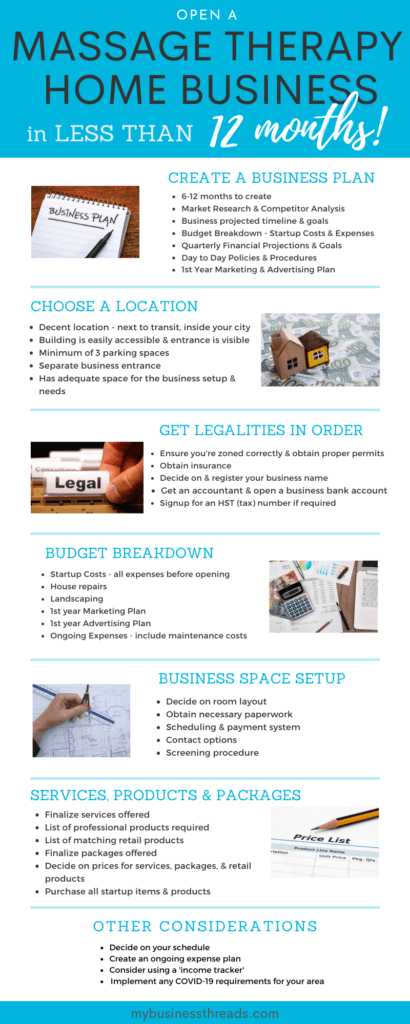
If you’re ready to open your own clinic or home business but are feeling overwhelmed with the process, you may be a good fit for my Entrepreneur Empire Mentorship Program, where I help my clients through the entire process of setting up and launching their new business confidently and successfully. We do this by creating a strong foundation with a thorough business plan, marketing & advertising plan, organic social media strategy and more inside my Entrepreneur Empire Mentorship group coaching program (also contains 1:1 coaching elements).
Think this might be for you? Are you a serious action taker with a positive mindset who is super kind? If so, I would love to chat with you to see if my mentorship program is would be a good fit. Though this program is not for everyone. You must be ready to open your business, willing and able to invest in yourself as a new business owner and ready to take action!
If this sounds like you and you’re interested, I would love to have you in the program! I don’t have a sales page where you can simply join, and the reason for this is that I need to meet you first to ensure that we are aligned and that my program is going to be a good fit for you.
So if you’re ready to take action, book a free call with me today to see if the mentorship program is right for you!
If you book your call by June 20th, you will get $1000 OFF the price! This massive discount is only for serious action takers, so be quick, spaces are limited!
Ongoing Expense Plan
Okay, remember way back at the beginning when we talked about your business plan? Part of that was your quarterly business expense goals. This will be helpful in creating an ongoing expense plan. You can create this plan once you’ve been open and running for a few months. After you acquire all of your initial start up products and marketing materials, you will begin using these things. Over the next few months after opening, you will know when it’s time to order supplies again. Though, you may not need to reorder anything at the beginning for 6 months or so. As you get more clients, you will know when you need to reorder.
After a few rounds of this, you can formulate your ongoing expense plan. I would give it at least 6-8months before you finalize an ongoing expense plan. Until that point, use your business expense goals from your business plan and make sure you are not over ordering. Over time, I found that I didn’t need to order more than the minimum required to get the free shipping with my aesthetics supply company.
So for my business, I order either $250 every 2 months, or I spend $450 – $500 every 4 months. I did not get into this routine though until after 1 year of opening my business. This is because I had more than enough start up supplies to get going. So, use your business expense goal plan first for at least 6-8 months and then once you know how busy you have been and are getting, you’ll be able to formulate a long term ongoing expense plan based on the needs of your business (which you won’t know until you start working).
COVID-19
This past year has been a rough one for Massage Therapists everywhere. Since COVID-19 came into our lives, life has been different in every way. It has been especially different for our work lives. If you’ve been following along, you know that every business has various requirements that need to be met before they are allowed to reopen during COVID-19.
In Ontario, Massage Therapy is a regulated health profession, so the requirements are quite strict. However, all Massage Therapists everywhere should be taking precautions during this time. If you are not currently living in Ontario, be sure to check with your province, city or state, for any requirements that you need to implement in order to open or reopen your Massage Therapy practice. For Massage Therapists in Ontario, here is a complete guide of changes you will need to make before opening or reopening, COVID-19 Pandemic – Practice Guidance for Massage Therapists document. For a full list of resources from the College of Massage Therapists of Ontario, see this CMTO Webpage.
Before you open your practice, you will need to review the documents regarding your province, city or state for COVID-19 and implement any necessary requirements regarding hand hygiene, cleaning and disinfecting, personal protective equipment, necessary signage, required screening processes, new paperwork, new policies and procedures for your practice, and anything else that you may require.
The following are some forms that are now necessary for Massage Therapists in Ontario but may be a good idea to implement even if you are in a different province or state.
- A general infection prevention log (a cleaning record)
- A control record/log for the practice (new policies implemented for COVID control)
- A record of COVID-19 infection precautions taken for each client, in the client health record, including outcome of screening (dates included) and related decisions, PPE worn etc.
- A contact tracing log
Items to Purchase for COVID-19
- Masks
- Gloves
- Touch-less garbage cans
- Hand sanitizer
- Disinfectant
- Tissues
- Soap
- Soap Dispenser
- Paper towel
- Face shield
- Goggles
- Disposable Smocks
- Work shirts
- Work pants
- Plexiglas barriers
- Sheets
- Blankets
- Headrest covers/pillow cases
- Stand for wash station
- Wash station
- Vinyl pillows
- Fabric-less chairs for clients
- Extra lotion bottles
Assessment Tools (for Ontario)
Online self-assessment tool (in Ontario)- Coronavirus (COVID-19) self-assessment
I know it seems complicated and costly, but at the end of the day, keeping everyone safe and healthy, including our families is the most important thing that we can do. Whew! We made it! You are now all set to begin the planning process to open your own Massage Therapy business right out of your house!
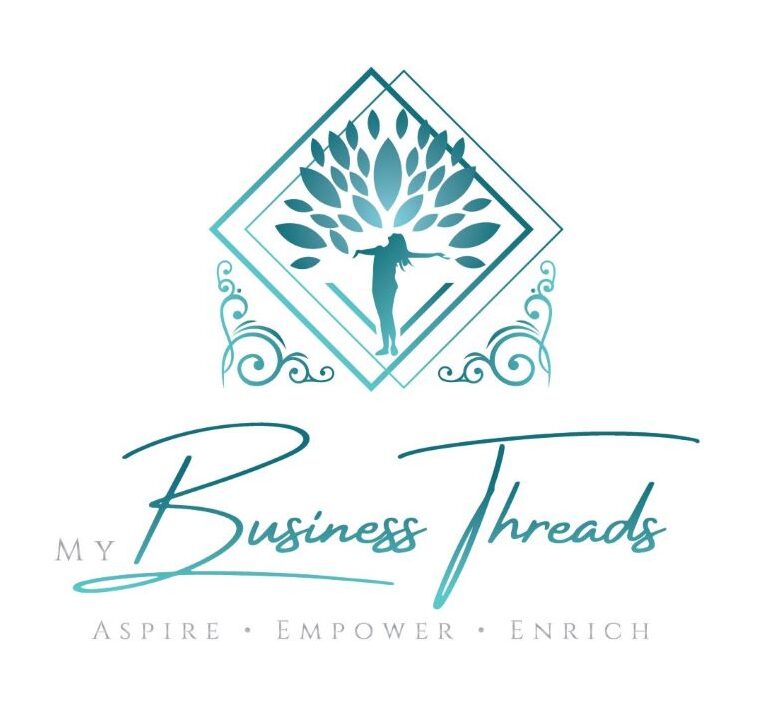
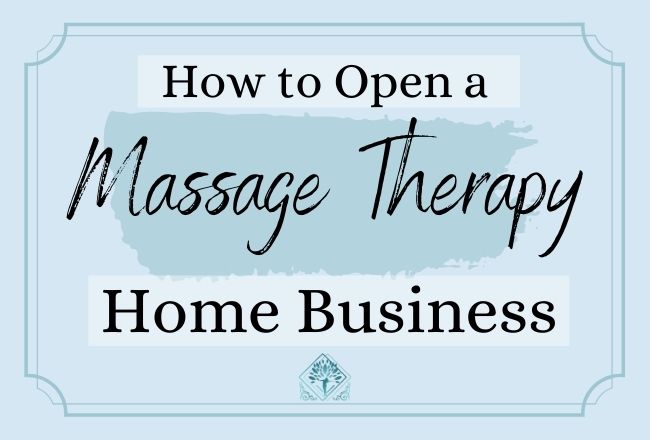
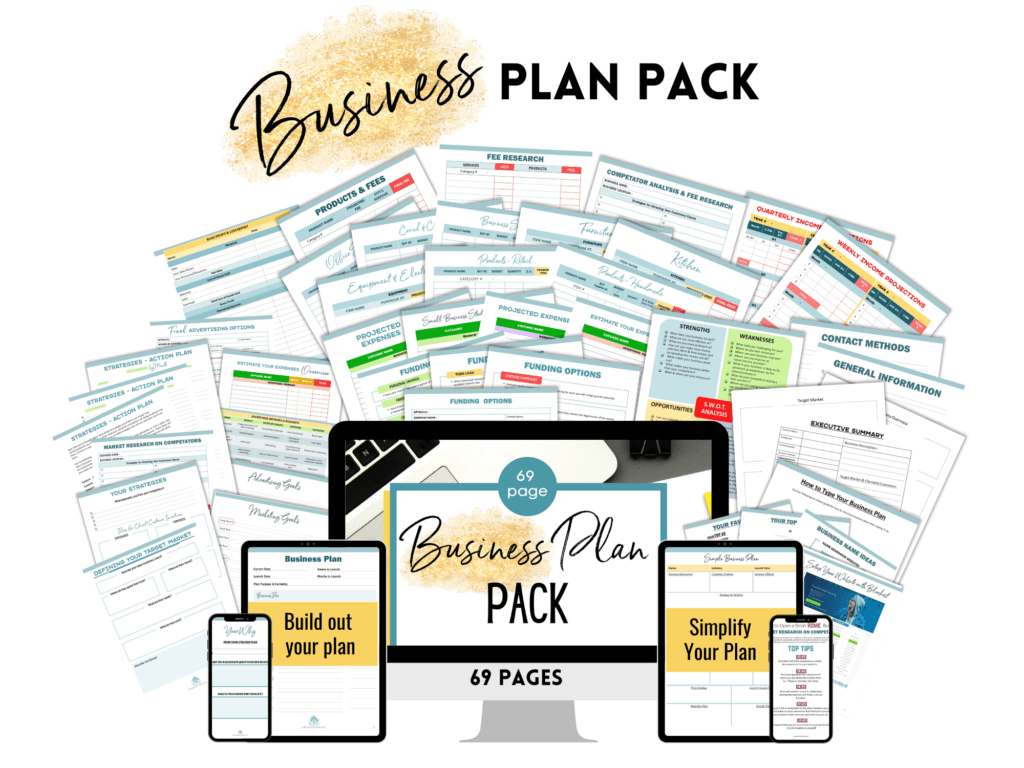
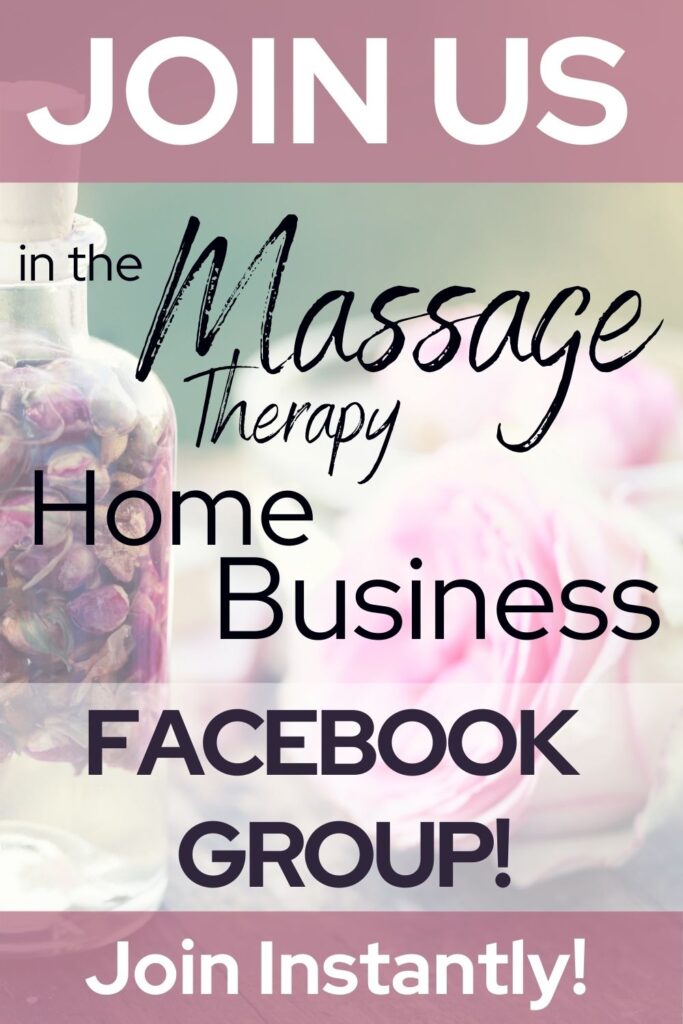
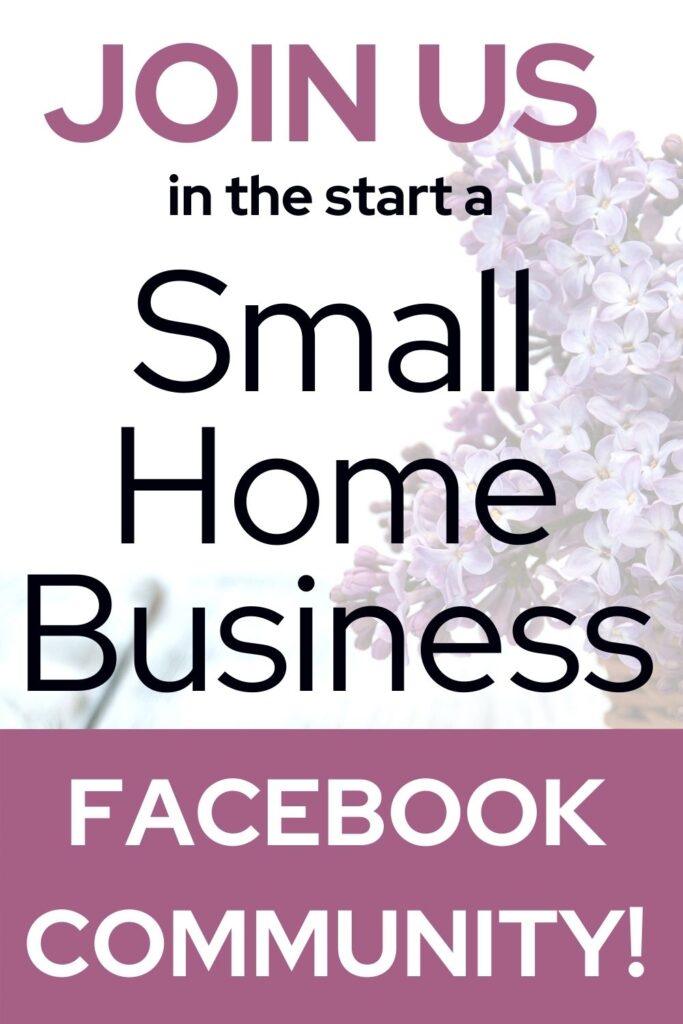

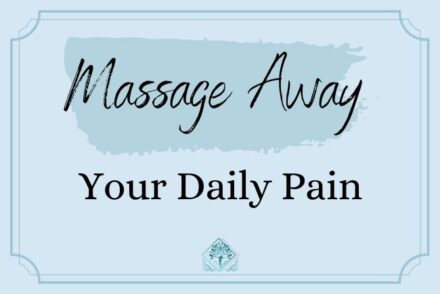
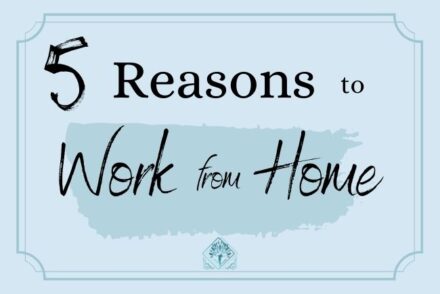

No Comments